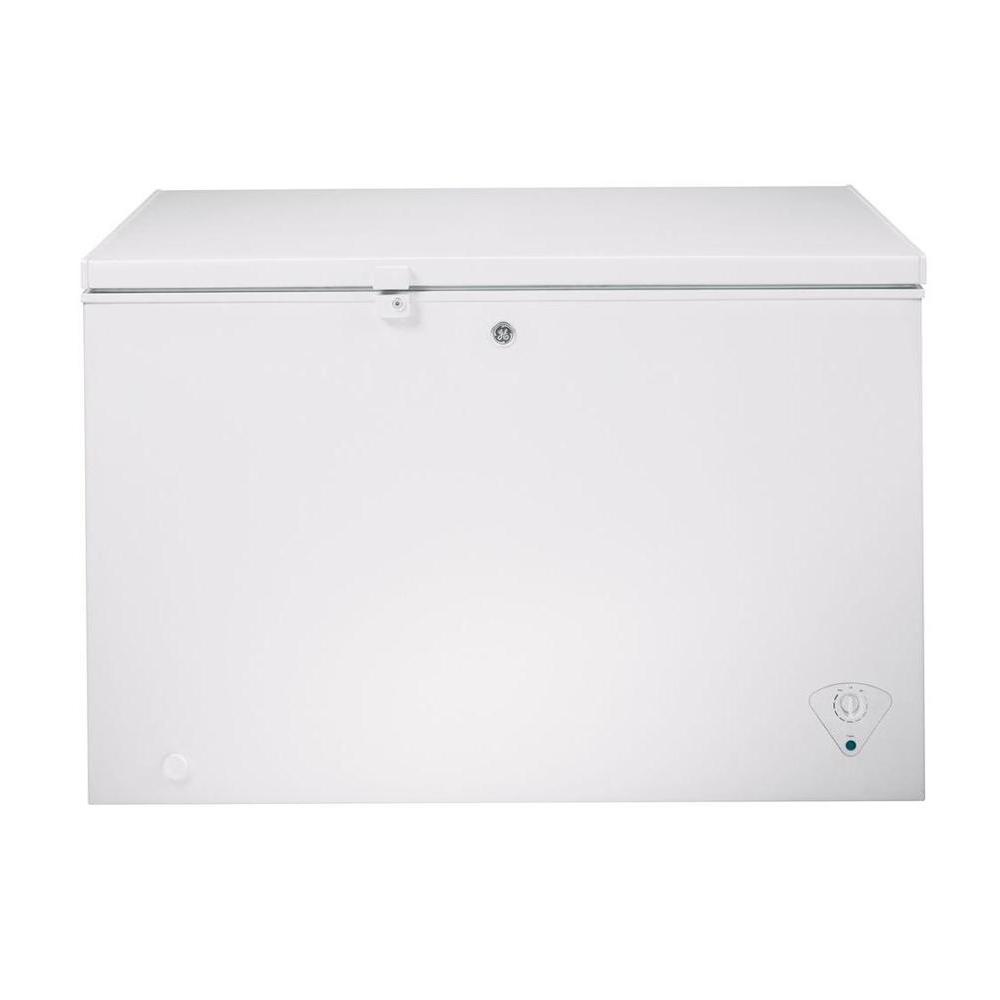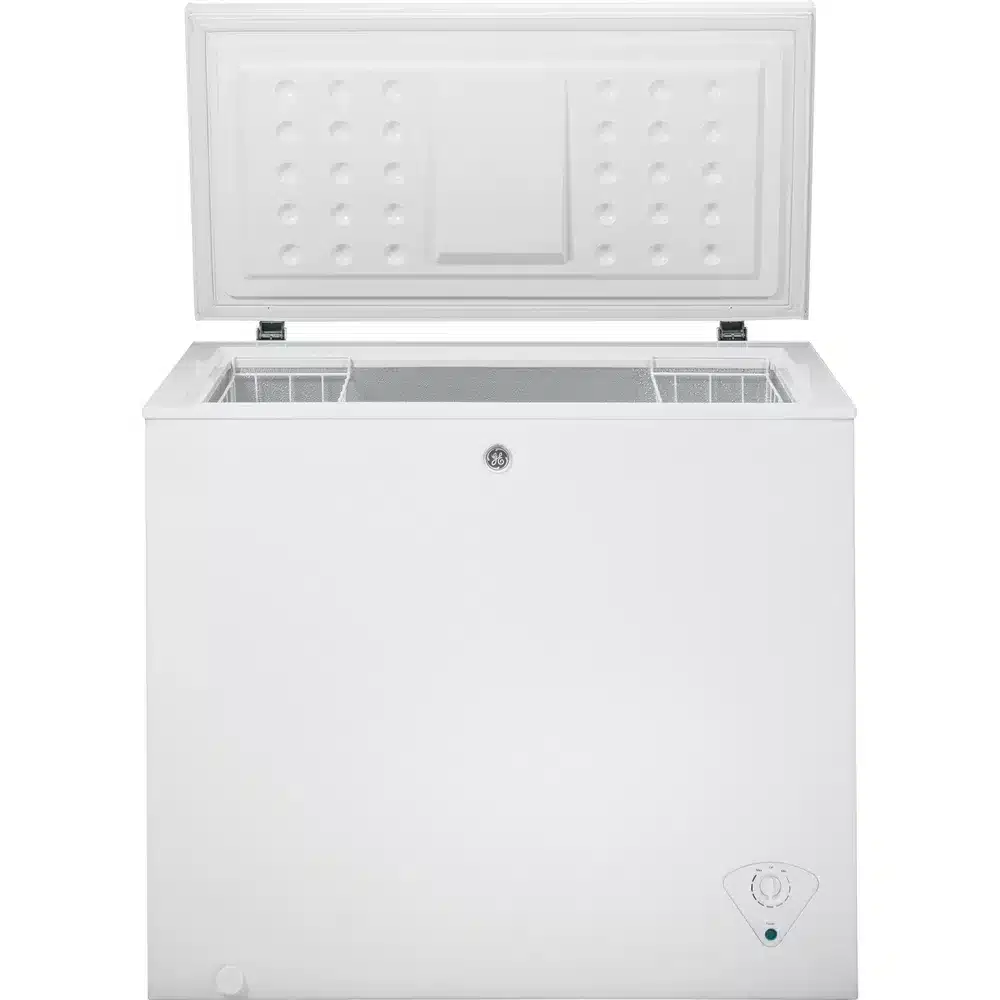If you have a GE freezer chest that is not freezing fully, you might be wondering what is wrong and how to fix it. A freezer chest that is not freezing fully can cause your food to spoil, waste energy, and make loud noises. There are several possible reasons why your GE freezer chest is not freezing fully, such as:
- A dirty or blocked condenser coil
- A faulty or frozen evaporator fan motor
- A defective start relay or capacitor
- A broken defrost heater or timer
- A malfunctioning temperature control thermostat
- A damaged user control and display board
- A failed compressor or sealed system leak
In this post, we’ll show you how to troubleshoot and resolve each of these problems, and how to prevent them from happening again.
How to Troubleshoot and Resolve a GE Freezer Chest Not Freezing Fully
To troubleshoot and resolve a GE freezer chest not freezing fully, you’ll need to follow these steps:
- Unplug the power cord from the power outlet. This is an important safety precaution to avoid any electrical shocks or injuries.
- Check the condenser coil for any dirt, dust, or debris. The condenser coil is located behind or under the freezer chest, and it helps dissipate the heat from the refrigerant in the sealed system. If the condenser coil is dirty or blocked, it can reduce the cooling efficiency and performance of your freezer chest. To clean the condenser coil, use a vacuum cleaner with a brush attachment or a soft brush to remove any dirt or dust. Wipe the coil with a damp cloth and dry it thoroughly.
- Check the evaporator fan motor for any frost, ice, or damage. The evaporator fan motor is located inside the freezer compartment, behind a panel on the back wall. It helps circulate the cold air inside the freezer chest. If the evaporator fan motor is frozen, damaged, or not working, it can prevent the cold air from reaching all parts of the freezer chest. To check the evaporator fan motor, remove the panel that covers it and inspect it for any signs of frost, ice, or damage. If there is frost or ice on the fan motor, you may need to defrost your freezer chest manually by leaving it unplugged for several hours or overnight. If there is damage on the fan motor, you may need to replace it with a new one of the same type.
- Check the start relay and capacitor for any burn marks, cracks, or bulges. The start relay and capacitor are located on the side of the compressor, which is located behind or under the freezer chest. They help start and run the compressor, which is the heart of the cooling system. If the start relay or capacitor are burned, cracked, or bulged, they can prevent the compressor from working properly or at all. To check the start relay and capacitor, disconnect them from the compressor and use a multimeter to test them for continuity. If there is no continuity on either of them, you may need to replace them with new ones of the same type.
- Check the defrost heater and timer for any damage or malfunction. The defrost heater and timer are located inside the freezer compartment, behind a panel on the back wall. They help melt any frost or ice that may build up on the evaporator coil during normal operation. If the defrost heater or timer are damaged or malfunctioning, they can cause excessive frost or ice on the evaporator coil, which can reduce the cooling efficiency and performance of your freezer chest. To check the defrost heater and timer, remove the panel that covers them and use a multimeter to test them for continuity. If there is no continuity on either of them, you may need to replace them with new ones of the same type.
- Check the temperature control thermostat for any damage or incorrect setting. The temperature control thermostat is located inside the freezer compartment, on the back wall or the ceiling. It helps regulate the temperature inside the freezer chest by turning the compressor and the evaporator fan motor on and off as needed. If the temperature control thermostat is damaged or set too high, it can cause the freezer chest to not freeze fully or at all. To check the temperature control thermostat, turn it to the coldest setting and listen for a click sound. If you hear a click sound, the thermostat is working properly and you may need to adjust it to a lower setting. If you don’t hear a click sound, the thermostat may be faulty and you may need to replace it with a new one of the same type.
- Check the user control and display board for any damage or error codes. The user control and display board is located on the door or the top of the freezer chest. It allows you to set and monitor the temperature and the functions of the freezer chest. If the user control and display board is damaged or shows an error code, it can prevent the freezer chest from working properly or at all. To check the user control and display board, look for any signs of damage or error codes on the display. If there is any damage or error code, you may need to replace the board with a new one of the same type.
- Check the compressor and the sealed system for any signs of failure or leakage. The compressor and the sealed system are located behind or under the freezer chest, and they contain the refrigerant that cools the freezer chest. If the compressor or the sealed system are failed or leaking, they can cause the freezer chest to not freeze fully or at all. To check the compressor and the sealed system, listen for any unusual noises or vibrations from the compressor, such as humming, buzzing, clicking, or rattling. You can also look for any signs of oil or refrigerant leakage on the floor or the coils. If you notice any of these signs, you may need to contact a professional service technician to repair or replace the compressor or the sealed system.

How to Prevent a GE Freezer Chest Not Freezing Fully
To prevent a GE freezer chest not freezing fully, you should follow these tips:
- Keep the freezer chest in a cool and dry place, away from direct sunlight, heat sources, or moisture.
- Avoid overloading or underloading the freezer chest, as this can affect the airflow and efficiency of the cooling system.
- Keep the freezer door closed as much as possible, and avoid opening and closing it frequently or for long periods of time.
- Clean the condenser coil and the evaporator fan motor regularly, at least once every six months, to remove any dirt or dust that may reduce their performance.
- Defrost the freezer chest manually if it has manual defrost, or check the automatic defrost system if it has one, to prevent excessive frost or ice buildup on the evaporator coil.
- Check and replace the temperature control thermostat, the start relay and capacitor, the defrost heater and timer, and the user control and display board if they are damaged or malfunctioning.

FAQs About a GE Freezer Chest Not Freezing Fully
Here are some common questions and answers about a GE freezer chest not freezing fully:
- What is the ideal temperature for my GE freezer chest? The ideal temperature for your GE freezer chest is 0 degrees Fahrenheit or below. This temperature will keep your food frozen and safe for long-term storage, and prevent bacteria growth and spoilage. You can adjust the temperature setting of your GE freezer chest by using the user control and display board on the door or the top of the freezer chest.
- How do I know if my GE freezer chest is working properly? You can check if your GE freezer chest is working properly by using a thermometer to measure the actual temperature inside the freezer compartment, and comparing it with the display reading. If they match or are close to each other, then your GE freezer chest is working properly. If they differ by more than 5 degrees Fahrenheit, then there may be a problem with your GE freezer chest that needs to be fixed.
- Where can I find more information about my GE freezer chest? You can find more information about your GE freezer chest by looking at your owner’s manual, product label, or serial number label. You can also contact GE customer service with your model and serial number for more assistance.
Conclusion
A GE freezer chest not freezing fully can cause your food to spoil, waste energy, and make loud noises. There are several possible reasons why your GE freezer chest is not freezing fully, such as a dirty or blocked condenser coil, a faulty or frozen evaporator fan motor, a defective start relay or capacitor, a broken defrost heater or timer, a malfunctioning temperature control thermostat, a damaged user control and display board, a failed compressor or sealed system leak. To troubleshoot and resolve each of these problems, you’ll need to follow some steps to test and replace the faulty components, or adjust and reset the settings. To prevent these problems from happening again, you’ll need to follow some tips to keep your freezer chest in good condition.



